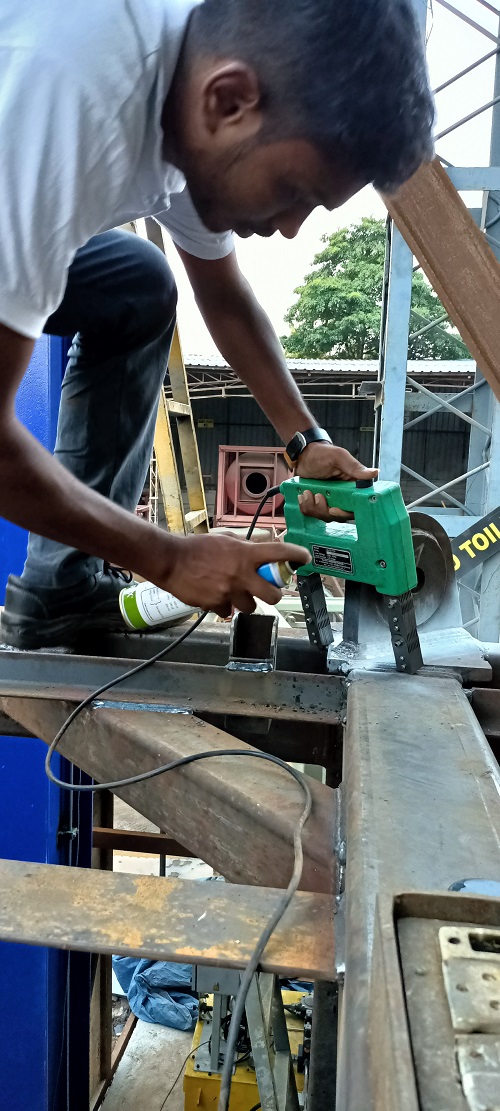
Non-destructive testing (NDT) refers to a variety of inspection techniques that permit inspectors to gather information and assess a system, component, or substance without causing lasting damage or alteration.You should familiarise yourself with the primary NDT techniques if you work in a field where NDT is used to evaluate your systems and components.You can choose the finest NDT techniques for your needs by learning more about NDT.
Applications of Non-Destructive Testing and Typical Techniques
Since NDT is such a broad term, you might be interested in learning more about its primary uses and accepted testing techniques.NDT techniques come in various methods and each method has a particular advantage for identifying faults in a material such as Leak testing, radiography testing, acoustic emission testing, and liquid penetrant testing are a few of the most often used NDT techniques.
Radiography Testing: Radiography Testing spots imperfections in a component or system through X-radiation or gamma-radiation. This kind of test uses an X-ray generator or a radioactive isotope to send radiation into a material you’re testing and onto a detector, like a film. After directing the radiation, inspectors can look at key readings from a shadowgraph created by a detector, helping them see potential issues, such as density alterations.
Visual Testing: Visual Testing involves the collection of visual information on a material’s status. This form of testing is the most basic, as you can complete it by simply looking at an asset. For more in-depth visual inspections, you can use a Remote Visual Inspection device to get a more precise look at materials.
Leak Testing: When you have a leaking structure or vessel, you can use Leak Testing to study the leaks and identify an asset’s defects. Inspectors often conduct leak testing with soap-bubble examinations, pressure gauges and listening devices
Acoustic Emission Testing: Acoustic Emission Testing refers to the process of utilizing acoustic emissions to discover an asset’s potential imperfections and defects. Much of this test involves looking for acoustic energy bursts, as these bursts indicate defects. Inspectors also examine a burst’s arrival time, location and intensity to spot potential issues.
Ultrasonic Testing: With Ultrasonic Testing, an inspector transmits high-frequency waves into an asset or material to spot material property changes. A primary type of ultrasonic testing utilizes pulse echos. In this test, an inspector sends sounds into an asset and then measures the sound’s echos, as these echos can help them spot surface imperfections.
Magnetic Particle Testing: Magnetic Particle Testing involves the process of spotting a material’s flaws by reviewing disruption in the material’s magnetic field’s flow. To conduct these tests, an inspector induces a magnetic field in an asset very susceptible to magnetization. Once they induce the magnetic field, they place iron particles over the material’s surface. These particles showcase any disruptions and provide visual indicators of imperfections’ locations.
Liquid Penetrant Testing: When an inspector conducts Liquid Penetrant Testing, they’ll start by placing a coating of liquid featuring a fluorescent or visible dye over an asset. Inspectors then take off any extra solution from the asset’s surface. The remaining solution will stay in breaks in the surface, revealing any defects. After they spot any defects, they’ll remove the fluorescent dye, using ultraviolet light to examine defects. With regular dyes, inspectors will study defects via the contrast between the developer and penetrant.
Eddy Current Testing: As a form of Electromagnetic Testing, Eddy Current Testing involves inspectors measuring a material’s magnetic field for the strength of eddy currents, sometimes referred to as electrical currents. After measuring these currents, the inspector can often spot defects in the asset or material. Particularly, inspectors look for electric current interruptions that indicate the material has imperfections.
Application of NDT in various industries:
Mining
Automotive
Oil and gas
Chemicals
Aerospace
Maritime
Power generation, etc
NDT Training Services
You may want to provide important team members NDT training if you work in a field that uses it.
In order to ensure that NDT is implemented and documented correctly, which is essential to the performance of your assets, you should seek out a business with the necessary experience.For your team’s benefit, Engineers Edge provide training services for a variety of non-destructive testing applications.


